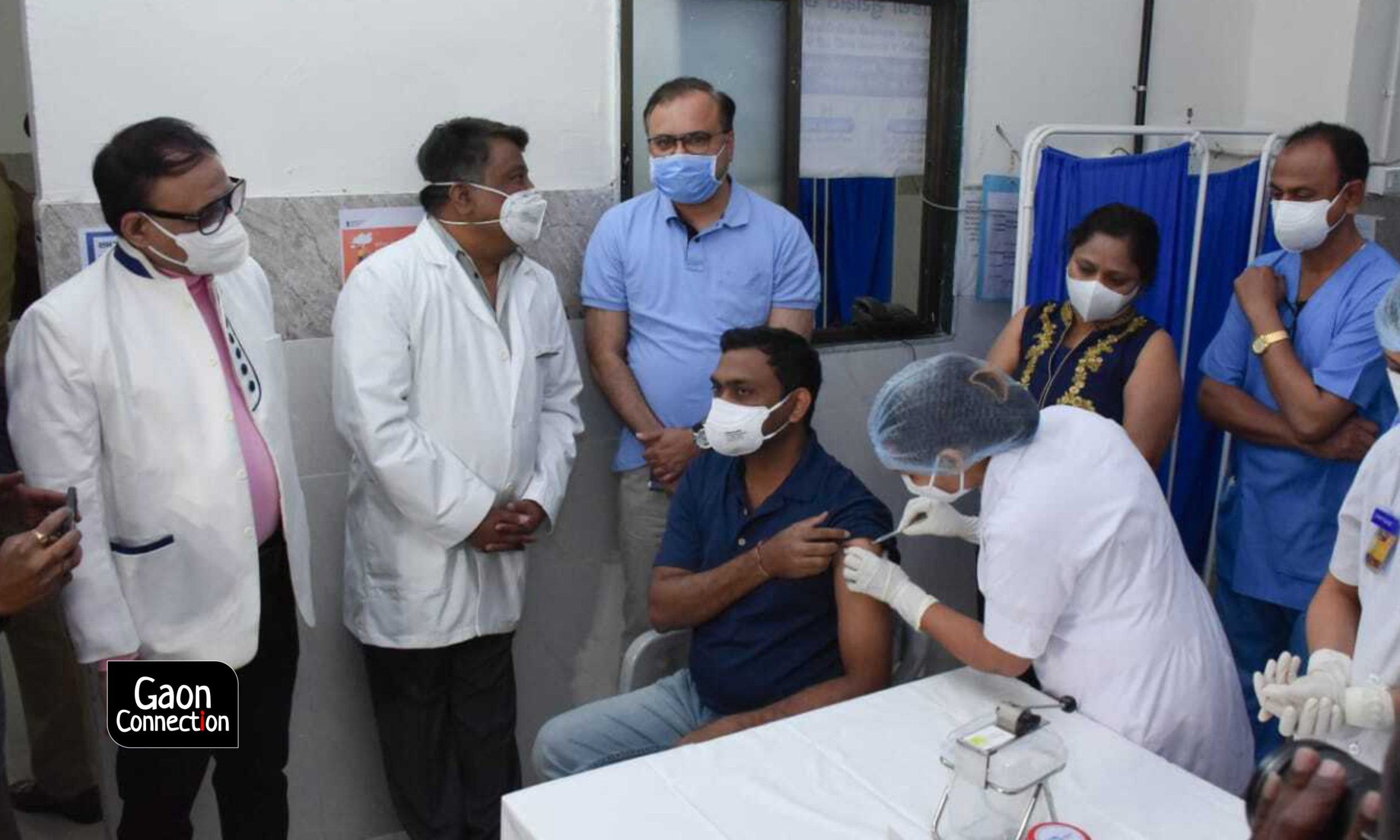Ripple effect of COVID-19’s second wave in India being felt across the globe
Over 61 million COVID-19 vaccine doses have been administered in India. Meanwhile, 64 million vaccine doses have been exported to around 77 countries. As India faces a second wave of corona pandemic, a temporary halt of vaccine export is expected to hit vaccination drives in several countries.


Temporary staying of vaccine export by India may affect the vaccination programme in several other countries. Photo: @drlpathak
India is presently in the throes of a ‘second wave’ of COVID-19 as corona cases surge across the country. Various state governments, such as Maharashtra and Goa, have started to enforce localised lockdowns, restrictions and night curfew in order to contain the spread of the virus. Situation remains grim as experts fear the second wave could be worse than the first one.
Today, March 30 (till 8 am), India recorded 56,211 new coronavirus cases in the last 24 hours. Just two weeks back, the total national seven-day average of daily cases was 23,578. Now it is 50,407. With 271 deaths recorded today, the total number of fatalities due to the virus stands at 162,144.
Six states — Maharashtra, Punjab, Karnataka, Madhya Pradesh, Tamil Nadu, and Gujarat — account for 78.56 per cent of the 56,211 fresh cases recorded in the country.
Meanwhile, a new “double mutant” (where two mutations come together in the same virus) variant of the virus was recently detected from samples collected in India. Three known variants (South Africa, Brazil, and the UK variants) have also shown up.
The ripples of this second wave of COVID-19 in India are being felt across the globe as India was supplying the cheapest corona vaccine — Rs 250 (USD 3.40 per dose) — to 77 countries including Bangladesh, Myanmar, Nepal, Sri Lanka, and the United Kingdom. In the wake of rising corona cases in the country, the Indian government has temporarily stopped export of the vaccine to meet domestic demand, which has affected vaccination drives in several other countries.
Back home, only 3.78 per cent of the total Indian population has been administered at least one vaccine dose; 0.65 per cent have been fully vaccinated (both the doses).

Second wave and COVID-19 vaccination
Two days from now, April 1, all people above the age of 45, irrespective of comorbidities, will be eligible for COVID-19 vaccination in India. At present, only citizens above 60 and those over 45 with comorbidities are allowed to get the vaccination.
“This strategy is okay if you want to decrease the number of deaths. But if you want to decrease the number of transmissions, then you must vaccinate more people in a single area than vaccinating small groups everywhere,” Yogesh Jain, Chhattisgarh-based public health physician and co-founder of Jan Swasthya Sahyog, told Gaon Connection.
“Wherever there are large cases, testing, tracking, and tracing should be accelerated,” he added. According to him, health experts are not sure about the cause for the second wave “because we are not investigating it well enough”.
“People are not prepared for chronic crises. People are tired of not living normally. Same yardsticks that led to harsh measures last year have not been applied this year,” said Jain.
Meanwhile, Uddhav Thackeray, chief minister of Maharashtra warned of “lockdown-like restrictions” if people fail to adhere to coronavirus-appropriate behaviour. Night curfew has been imposed in the state from March 28.
Ripple effect
India, one of the world’s biggest vaccine producers, has temporarily halted export of COVID-19 vaccine (AstraZeneca coronavirus shot made by the Serum Institute of India) to other countries as a second wave of infections hits the country. Since January 16, over 61 million doses have been administered to citizens in India. Meanwhile, the country has exported around 64 million vaccine doses.
There are news reports saying temporary staying of vaccine export by India may affect the vaccination programme in the UK. The move will also affect supplies to the GAVI/WHO-backed global COVAX vaccine-sharing facility, through which 64 poorer countries are supposed to get doses from the Serum Institute of India.
The Institute, the world’s biggest vaccine manufacturer, had supplied 28 million doses to COVAX. An additional 40 million doses had been expected in March and up to 50 million doses in April. On March 25, COVAX said there would be delays in supply of vaccine doses to poorer nations because of “increased demand for COVID-19 vaccines in India.” COVAX programme is co-led by GAVI, the World Health Organization (WHO) and the Coalition for Epidemic Preparedness Innovations (CEPI) in partnership with UNICEF.
The neighbour of India and one of Asia’s poorest nations — Nepal — has had to halt its vaccination programme. It was heavily reliant on doses of the AstraZeneca vaccine, but with its stockpile running low, the country stopped administering vaccines on March 17.
However, another reason why vaccine supply to other countries has been temporarily stopped “is because of the reactions being reported in other countries, not because of vaccine nationalism. We need to find if those reactions were causal or associated. This is short term”, K Suresh Kishanrao, Bengaluru-based public health specialist, told Gaon Connection.
“Unless we have investigation reports, the export has been stopped temporarily,” he added.
At least 65 deaths have been recorded in India following vaccination for COVID-19 since January 16. On March 16, a group of public health experts wrote a letter to the health ministry demanding an investigation into the cause of deaths.
India is using two COVID19 vaccines for vaccination drive– Covaxin developed by Bharat Biotech, and the Oxford-AstraZeneca vaccine manufactured by Serum Institute of India. The global demand for Covaxin is much lower than the demand for the AstraZeneca vaccine.

Vaccine shortage in India?
Rao who has also been associated with the Government of India’s universal immunisation programme for nearly 50 years said that “as of now, we do not have enough vaccines to meet the country’s demand”.
“We have started producing the vaccines just three months back. By the end of 2021, we will have enough vaccines that are needed in the country,” he added.
A report shows “only 4 per cent of the total population in the country has been vaccinated so far”. Commenting on this, Rao said: “That four per cent has been calculated using the country’s total population. How fair is that? As of now, people above sixty and above forty-five with comorbidities are being vaccinated. If we calculate using this data, you would find the vaccination coverage as twenty to twenty five per cent”.
As of today, first doses of vaccines have been administered to 6,872,483 and 28,219,257 people from 45 to less than 60 years of age with comorbidities and over 60 years of age, respectively. The total such population to be covered is 270 million.

